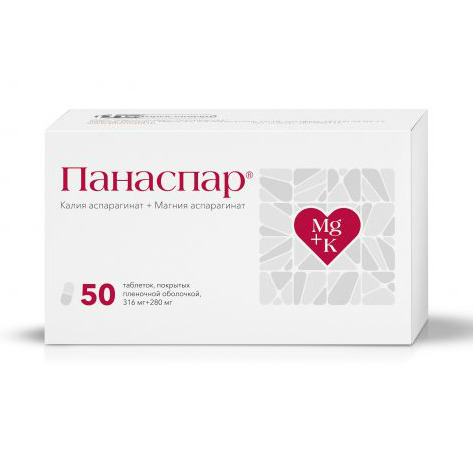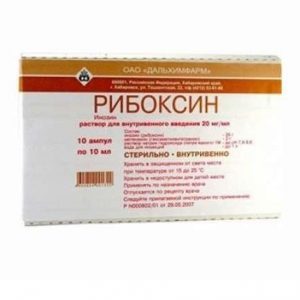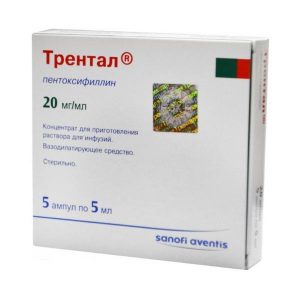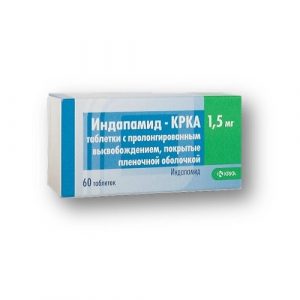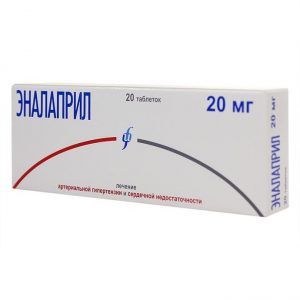Description
Pharmacological action
Pharmacodynamics
The most important intracellular cations of potassium (K +) and magnesium (Mg2 +) play a key role in the functioning of numerous enzymes, in the formation of bonds between macromolecules and intracellular structure s and in the mechanism of muscular contraction. The intra- and extracellular ratio of potassium, calcium, sodium, and magnesium ions affects myocardial contractility. Endogenous asparaginate acts as a conductor of ions: it has a high affinity for cells, due to the slight dissociation of its salts, ions in the form of complex compounds penetrate into the cell. Magnesium asparaginate and potassium asparaginate improve myocardial metabolism. A lack of magnesium / potassium predisposes to the development of arterial hypertension, coronary artery atherosclerosis, arrhythmias and metabolic changes in the myocardium.
Pharmacokinetics
Potassium and magnesium aspartate are intensively absorbed in the intestine, mainly in the small intestine. Excreted by the kidneys.
Indications
To eliminate potassium and magnesium deficiency in combination therapy for various manifestations of coronary heart disease (including acute myocardial infarction)
chronic heart failure
cardiac arrhythmias (including arrhythmias caused by overdose of cardiac glycosides).
Contraindications
Hypersensitivity to any of the components of the drug, acute and chronic renal failure, hyperkalemia, hypermagnesemia, Addison’s disease, atrioventricular block I-III degree, shock (including cardiogenic) (blood pressure less than 90 mm. Art.), impaired amino acid metabolism, severe myasthenia gravis, hemolysis, acute metabolic acidosis, state of dehydration, age under 18 years (efficacy and safety have not been established).
Precautions
Pregnancy (especially in the 1st trimester of pregnancy) and the period of breastfeeding.
Use during pregnancy and lactation
Use is possible if the potential benefit to the mother outweighs the potential risk to the fetus.
Potassium and magnesium asparaginate pass into breast milk. If you need to take the drug during lactation, breastfeeding must be stopped.
Special instructions
Patients with diseases accompanied by hyperkalemia require special attention: regular monitoring of potassium in the blood plasma is necessary.
Effects on ability to drive vehicles and mechanisms
No studies were conducted. It is not expected to affect the ability to drive vehicles and work with mechanisms that require an increased concentration of attention and speed of psychomotor reactions.
Composition of
Active ingredients: tar 3 g xeroform 3 g
Excipients: aerosil and castor oil – up to 100 g hemihydrate – 166.30 mg – 332.60 mg
in terms of potassium asparaginate – 158.00 mg – 316.00 mg
Magnesium asparaginate tetrahydrate – 175.00 mg – 350.00 mg
in terms of magnesium asparaginate – 140, 00 mg – 280.00 mg
Excipients:
Corn starch – 86.10 mg – 172.20 mg
Potato starch – 3.30 mg – 6.60
g colloidal silicon dioxide – 2.00 mg – Talc 4.00 mg
– 10.00 mg – 20.00 mg Magnesium stearate
– 4.00 mg – 8, 00 mg
Povidone (polyvinylpyrrolidone
molecular weight, povidone K-30) – 3.30 mg – 6.60 mg
Core weight 450.0 mg 900.0 mg
Shell:
Hypromellose
(hydroxypropylmethylcellulose – 3 s 6 7.570 mg
Triacetin – 0.380 mg – 0.760 mg
Butyl methacrylate copolymer -7.715 mg – 15.430 mg
Titanium dioxide – 1.925 mg – 3.850 mg
Talc – 2.260 mg – 4.520 mg
Stearic acid – 1.160 mg sodium lauride 1.160 mg – 1.160 mg mg – 1,550 mg
Weight of the tablet coated with
film coat 468.0 mg 936.0 mg
Dosage and administration of
Before use, consult your doctor.
Inside, without chewing and drinking plenty of water.
Panaspar should be taken after meals, as the acidic environment of the stomach reduces its effectiveness.
For a dosage of 158 mg + 140 mg
The recommended daily dose is 1-2 tablets 3 times a day.
The maximum daily dose is 1-2 tablets 3 times a day.
For a dosage of 280 mg + 316 mg
Recommended daily dose 1 tablet 3 times a day.
The maximum daily dose is 1 tablet 3 times a day.
Side effects
Nausea, vomiting, diarrhea, discomfort or burning in the epigastric region (in patients with anacid gastritis or cholecystitis), atrioventricular block, paradoxical reaction (increased extrasystoles), hyperkalemia, nausea, nausea, hypermagnesemia (facial flushing, thirst, decreased blood pressure, hyporeflexia, respiratory depression, convulsions).
If any of the following adverse reactions become serious, or you notice the occurrence of adverse reactions not listed in this manual, you should consult a doctor.
Drug interactions
Pharmacodynamic interactions
When used together with potassium-sparing diuretics (triamteren, spironolactone), beta-blockers, cyclosporine, heparin, angiotensin-converting enzyme inhibitors and developmental hypertrophic hypertrophy, asteroid hypertrophy and developmental hypertrophy of adenitis, The simultaneous use of potassium preparations with glucocorticosteroids eliminates the hypokalemia caused by the latter. Potassium reduces the unwanted effects of cardiac glycosides.
Panaspar enhances the negative dromo- and batmotropic effects of antiarrhythmic drugs. Magnesium reduces the effects of neomycin, polymyxin B, tetracycline, and streptomycin. Anesthetics increase the inhibitory effect of magnesium preparations on the central nervous system while the use of atracuronium, decametonium, succinyl chloride and suxamethonium may increase neuromuscular blockade. Calcitriol increases the content of magnesium in blood plasma, calcium preparations reduce the effects of magnesium preparations.
Pharmacokinetic interaction
Medicines with astringent and enveloping effects reduce the absorption of magnesium asparaginate and potassium asparaginate in the gastrointestinal tract, therefore it is necessary to observe the three-hour interval between oral administration of Panaspar with the above drugs.
Overdose of
Increased risk of symptoms of hyperkalemia and hypermagnesemia.
Symptoms of hyperkalemia: increased fatigue, myasthenia gravis, paresthesia, confusion, cardiac arrhythmias (bradycardia, atrioventricular block, arrhythmias, cardiac arrest).
Symptoms of hypermagnesemia: decreased neuromuscular irritability, nausea, vomiting, lethargy, decreased blood pressure.
With a sharp increase in the content of magnesium ions in the blood: inhibition of deep tendon reflexes, respiratory paralysis, coma.
Treatment: symptomatic therapy – intravenous administration of calcium chloride at a dose of 100 mg / min, if necessary – hemodialysis.
Storage conditions
At a temperature not exceeding 25 ° C.
Keep out of the reach of children!
Expiration
2 years.
Deystvuyuschee substances
asparahynat potassium, magnesium asparahynat
Form of Treatment
tablets
